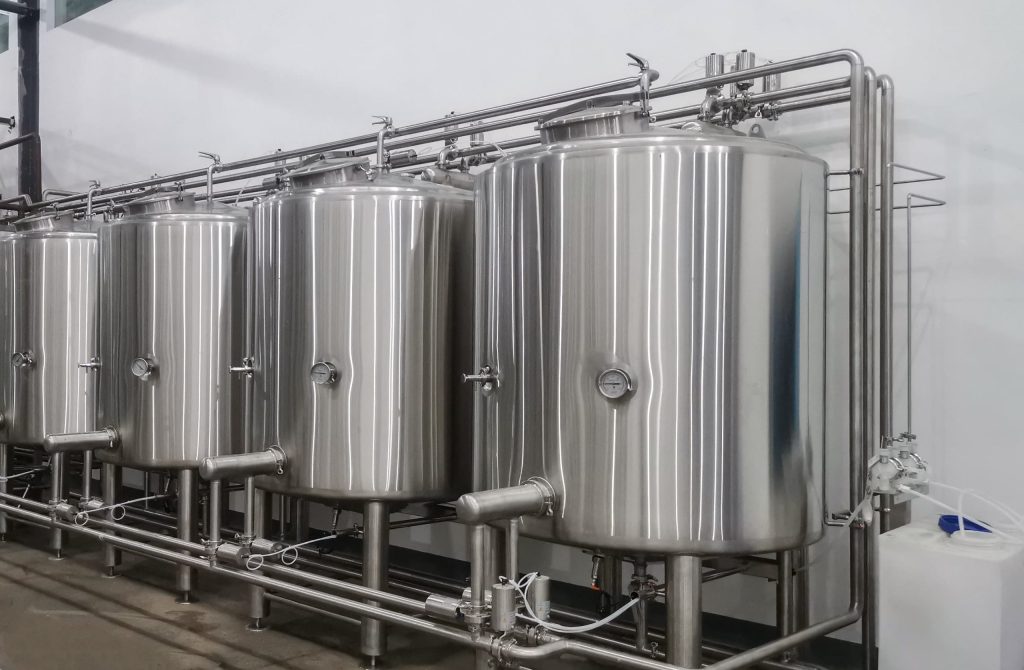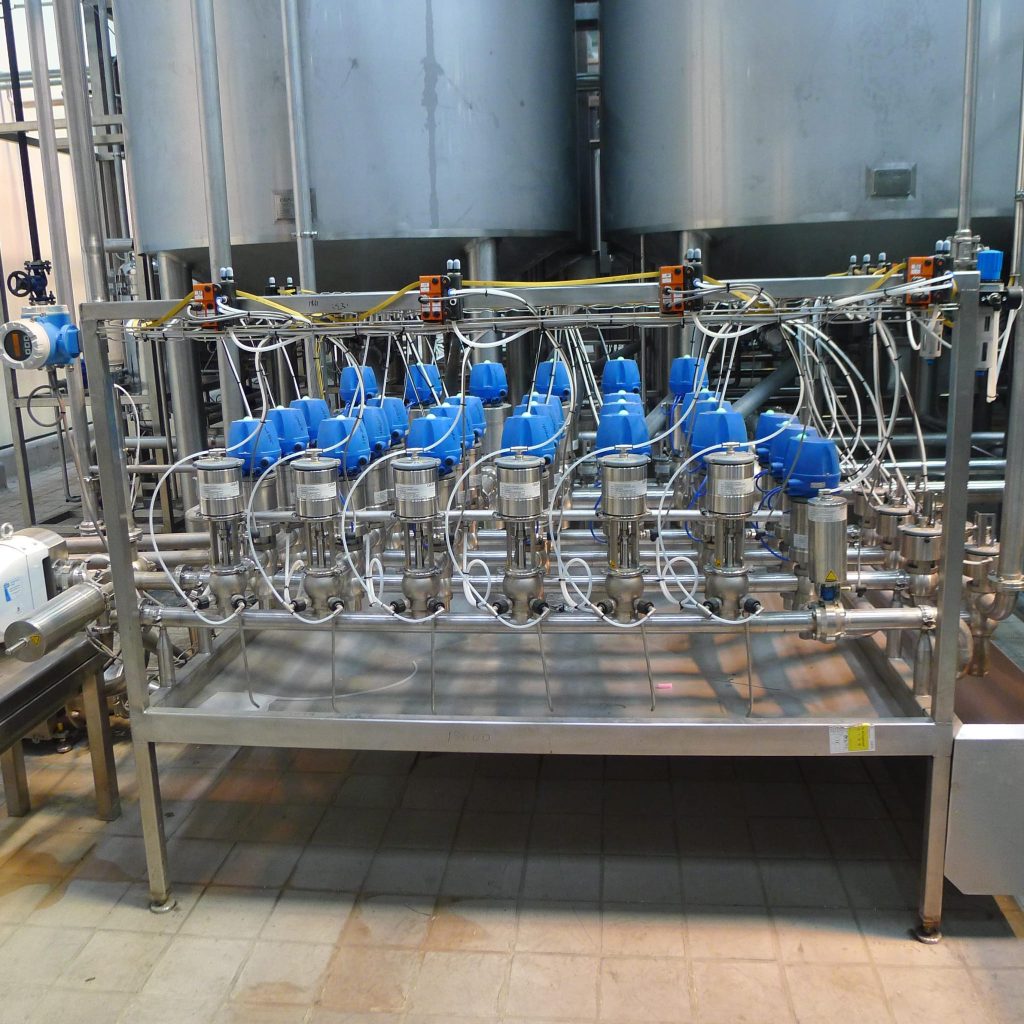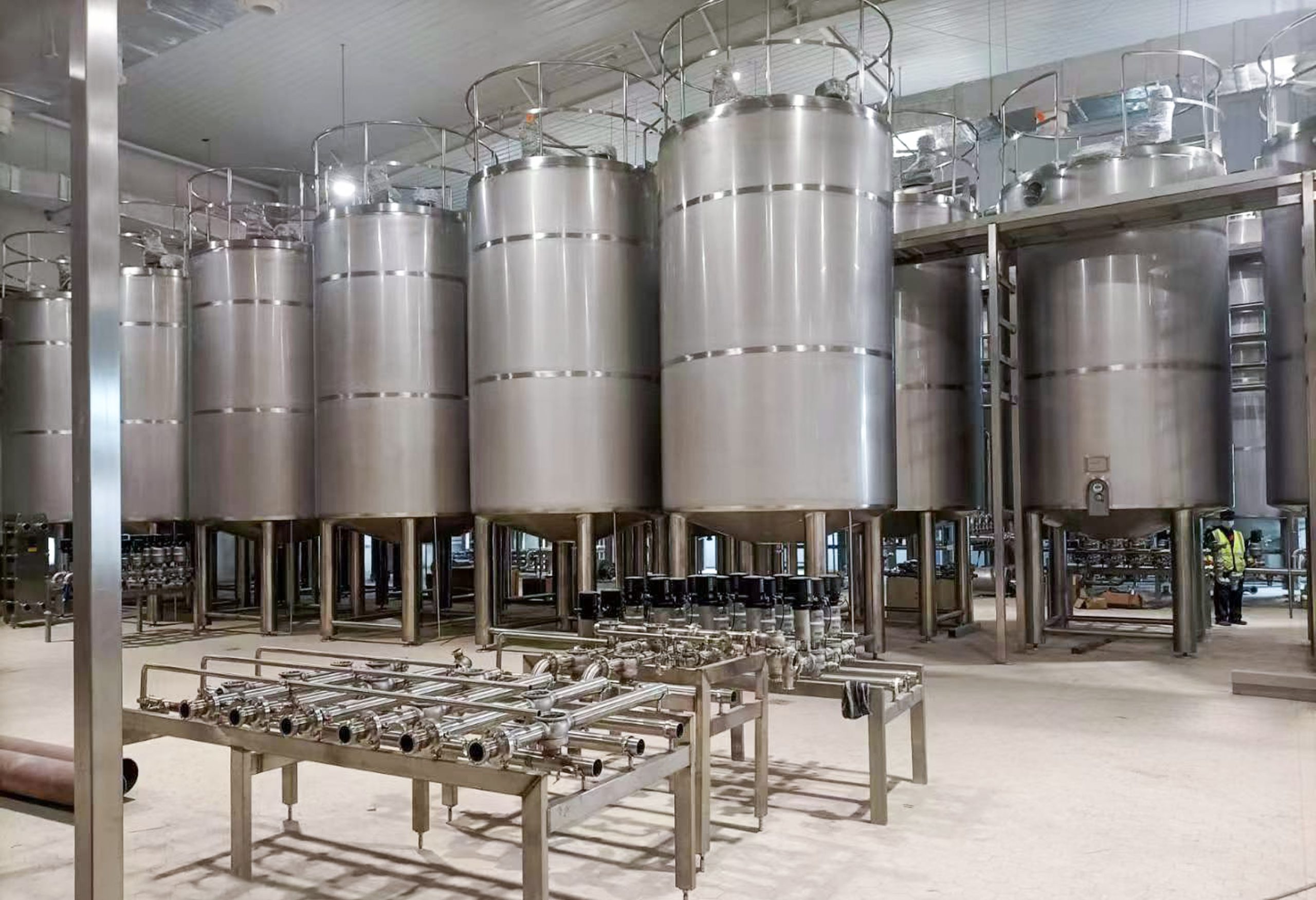Introducción

CIP clean in place systems have revolutionized cleaning processes across various industries, especially those with stringent hygiene requirements like food and beverage, pharmaceuticals, and cosmetics. CIP systems automate the cleaning and disinfection of process equipment without disassembly, significantly reducing downtime, labor costs, and the risk of human error. This comprehensive guide delves into the intricacies of CIP clean in place systems, exploring their components, operation, benefits, and applications.
What are CIP Clean in Place Systems?
CIP clean in place systems are designed to circulate cleaning and rinsing solutions through process equipment such as tanks, pipes, and processing lines. This automated process removes residues, contaminants, and microorganisms, ensuring hygienic conditions for subsequent production runs. Unlike manual cleaning, which requires disassembly and reassembly of equipment, CIP systems perform cleaning in a closed loop, minimizing the risk of contamination and maximizing efficiency.
La evolución de CIP Clean in Place Systems
Traditional cleaning methods were time-consuming and labor-intensive. The introduction of CIP systems marked a significant advancement, offering automated and repeatable cleaning cycles. Over time, advancements in technology have led to more sophisticated CIP systems with improved control, monitoring, and data logging capabilities. Modern CIP systems often integrate with plant-wide automation systems, further enhancing efficiency and traceability.
Key Components of CIP Clean in Place Systems
A typical CIP clean in place system comprises several key components working in concert to achieve effective cleaning:
- Tanques: Storage tanks hold the various cleaning solutions, including alkali, acid, and sanitizing agents.
- Zapatillas: Pumps circulate the cleaning solutions through the process equipment at the required flow rates and pressures.
- Piping and Valves: A network of pipes and valves directs the flow of cleaning solutions to different parts of the process equipment.
- Intercambiadores de calor: Heat exchangers heat the cleaning solutions to the optimal temperatures for effective cleaning.
- Instrumentation and Control System: Sensors, transmitters, and a control system monitor and control the CIP process, ensuring consistent and repeatable cleaning cycles.
- Spray Devices: Spray balls or rotating spray heads are strategically placed within tanks and vessels to ensure thorough coverage of interior surfaces.
- Recovery System: Some advanced CIP systems incorporate a recovery system to reuse cleaning solutions, reducing water and chemical consumption.
Understanding the CIP Clean in Place Systems Process
The CIP clean in place systems process typically involves several distinct stages:
- Pre-enjuague: An initial rinse removes gross debris and product residues.
- Alkali Wash: A caustic solution removes organic soils and fats.
- Enjuague Intermedio: A rinse removes residual alkali solution.
- Lavado con acido: An acid solution removes mineral deposits and scale.
- Enjuague final: A final rinse with purified water removes residual acid and prepares the equipment for production.
- Sanitización (opcional): A sanitizing agent is circulated to eliminate any remaining microorganisms.
Beneficios de implementar CIP Clean in Place Systems
Implementing CIP clean in place systems offers numerous advantages:
- Tiempo de inactividad reducido: Automated cleaning significantly reduces downtime compared to manual cleaning.
- Improved Hygiene: Consistent and repeatable cleaning cycles ensure high levels of hygiene and reduce the risk of product contamination.
- Reduced Labor Costs: Automated cleaning reduces the need for manual labor.
- Reducción del consumo de agua y productos químicos: Optimized cleaning cycles and solution recovery systems can minimize water and chemical usage.
- Seguridad mejorada: Closed-loop cleaning minimizes operator exposure to chemicals.
- Calidad del producto mejorada: Consistent cleaning ensures product quality and consistency.
- Traceability and Documentation: Modern CIP systems provide data logging and reporting capabilities, enabling traceability and compliance with regulatory requirements.
CIP Clean in Place Systems and Sustainable Practices
Modern CIP systems contribute to sustainability by reducing water and chemical consumption. Solution recovery systems and optimized cleaning cycles minimize waste and environmental impact.
Applications of CIP Clean in Place Systems
CIP clean in place systems are widely used in various industries:
- Alimentos y bebidas: Dairies, breweries, beverage plants, and food processing facilities.
- Productos farmacéuticos: Production of sterile and non-sterile drug products.
- Productos cosméticos: Fabricación de productos de cuidado personal.
- Biotecnología: Producción de biofármacos y otros productos biológicos.
CIP Clean in Place Systems in the Dairy Industry
The dairy industry relies heavily on CIP systems to maintain hygienic conditions in milk processing and cheese production.
Designing and Implementing CIP Clean in Place Systems
Designing and implementing a CIP system requires careful consideration of several factors:
- Process Equipment Design: The design of the process equipment should facilitate effective cleaning.
- Cleaning Solution Selection: The appropriate cleaning solutions should be selected based on the type of soil and the materials of construction of the equipment.
- CIP System Design: The CIP system should be designed to meet the specific cleaning requirements of the process.
- Validation and Commissioning: The CIP system should be validated and commissioned to ensure its effectiveness.
Optimizing CIP Clean in Place Systems for Efficiency
Optimizing CIP parameters such as flow rate, temperature, and cleaning time can further enhance efficiency and reduce resource consumption.
CIP Clean in Place Systems Maintenance and Troubleshooting
Regular maintenance is essential to ensure the reliable operation of CIP systems. This includes inspecting pumps, valves, and other components, as well as calibrating instruments. Common troubleshooting issues include insufficient cleaning, leaks, and control system malfunctions.
Common CIP Clean in Place Systems Challenges
Addressing challenges like foam control, chemical compatibility, and effective removal of specific soils is crucial for successful CIP operation.
CIP Clean in Place Systems: A Comparative Overview of Cleaning Parameters
The following table presents a comparative overview of typical cleaning parameters used in CIP clean in place systems for different cleaning stages:
| Etapa de limpieza | Cleaning Agent | Concentration (%) | Temperatura (°C) | Contact Time (min) |
|---|---|---|---|---|
| Pre-enjuague | Agua | N / A | Ambiente | 5-10 |
| Alkali Wash | Caustic Soda (NaOH) | 1-3 | 60-80 | 15-30 |
| Enjuague intermedio | Agua | N / A | Ambiente | 5-10 |
| Lavado con ácido | Nitric Acid (HNO3) | 0.5-1.5 | 50-70 | 10-20 |
| Enjuague final | Agua purificada | N / A | Ambiente | 5-10 |
| Sanitization (Opt.) | Peracetic Acid (PAA) | 0.01-0.2 | Ambiente | 5-10 |
This table provides general guidelines, and specific parameters may vary depending on the application and the type of soil being removed.
Tendencias futuras en CIP Clean in Place Systems

Future trends in CIP clean in place systems include the increasing use of advanced sensors, data analytics, and automation technologies. These advancements will enable more precise control, predictive maintenance, and further optimization of CIP processes.
The Role of Automation in CIP Clean in Place Systems
Automation plays a crucial role in modern CIP systems, enabling consistent and repeatable cleaning cycles, data logging, and remote monitoring.
Conclusión
CIP clean in place systems are indispensable tools for maintaining hygiene and ensuring product quality in various industries. Their automated cleaning capabilities offer significant advantages over manual cleaning methods, including reduced downtime, improved hygiene, and reduced labor costs. By understanding the principles, components, and operation of CIP systems, businesses can optimize their cleaning processes and achieve significant improvements in efficiency and productivity. Implementing and maintaining an effective CIP system is a crucial investment for any business prioritizing hygiene and product quality. The continued development of CIP technologies promises even more efficient and sustainable cleaning solutions in the future.
Preguntas más frecuentes
¿Cuál es la diferencia entre CIP y COP?
CIP (limpieza en el lugar) limpia el equipo sin desmontarlo, mientras que COP (limpieza fuera del lugar) requiere desmontarlo para su limpieza.
¿Con qué frecuencia debería? PIC ¿realizarse?
The frequency of CIP depends on the specific application and the level of contamination. It can range from daily to weekly or even less frequent in some cases.
What are the benefits of using CIP in the food industry?
CIP in the food industry ensures hygienic conditions, prevents product contamination, and extends product shelf life.
How can I optimize my CIP system?
Optimizing CIP involves adjusting parameters such as flow rate, temperature, cleaning time, and chemical concentration. Regular monitoring and maintenance are also crucial.

